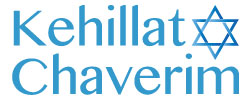Vayikra 5780 – The Mysterious Parashat Vayikra
Today we will explore the mysteries of Parshat Vayikra. First, why the name? Please open up your Chumash to the Parsha. “Vayikra el Moshe” (and G-d spoke to Moses). Hence, the name Vayikra. Right? No, wrong! That would make seem to make sense, but upon careful examination it is clear that this explanation will not suffice. G-d frequently spoke to Moses. Moses do this. Moses tell Pharaoh. Moses speak to the Children of Israel. Moreover, Vayikra is the name of the third Book of Moses in which this Pasha resides. There must be a better explanation for this apparent redundancy.
Look again at your Chumash. You will please note an anomaly at the end of the word “Vayikra”. Do you See the small aleph at the end of the word? Perhaps this is the key to our solution. Or perhaps the key lies in examining the main theme of the parsha. Parshat Vayikra is laden with a detailed description of the sacrifices that people were to make to G-d for their misdeeds and the purpose underlying each sacrifice during Mishkan and Temple times. I am neither interested in debating with you the appropriateness or inappropriateness of animal sacrifice, nor I am I inclined to try to justify its usage during those times. I am eager, however, to continue exploring this mysterious parsha. But first, a little story.
Midrash Rabbah is a collection of ten books that provide narrative stories and parables on the Five Books of Moses and the Five Megillot. Vayikra Rabbah, in discussing our parsha, tells a story about a king. The king commanded his royal architect to construct a magnificent palace. An extraordinarily well-designed and beautiful palace was built and lavishly furnished and decorated. The king’s name and royal emblem were engraved on all pillars and vessels throughout the palace. The king was overwhelmed with joy at the sight of his palace and engravings. As he sat in his palace embracing the splendor of his surroundings, he suddenly felt pangs of guilt. How can I sit in my palace, he thought, while my royal architect sits alone outside in the courtyard? The king summoned the architect to be brought into the palace to sit with him.
When Moses constructed the Mishkan in accordance with G-d’s instructions, he did so precisely and elegantly. G-d’s name was marked on every part of the Mishkan and on all its vessels. But when G-d’s Holy Presence entered the Mishkan, the humble Moses remained outside. G-d immediately called for Moses to enter the Mishkan. Not to order him to do anything. Not to order him to speak to anyone. He called to Moses for the sole purpose of joining Him in the MIshkan. Indeed, most unusual. Don’t you agree that the name given to the Parsha is perfect?
But wait! This still doesn’t explain the small aleph at the end of the word “Vayikra” or how the theme of sacrifice relates to the name of the parsha. Could it be that the name of the parsha conveys some lesson? Precisely! Parshat Vayikra teaches us the attribute of humility. Even though Moses was allowed to engage in direct communications with G-d, he nevertheless remained the humblest of men. The small aleph at the end of the word “Vayikra” stands for “ani”. “Ani” means “I”. If I make myself small. If I humble myself. I too can become elevated in the eyes of others. Also, I can become better equipped to avoid sin. Now that I am able to avoid sin, there will be no need for me to bring sacrificial offerings.
Good Shabbos and thank you for joining me on this mysterious journey.

